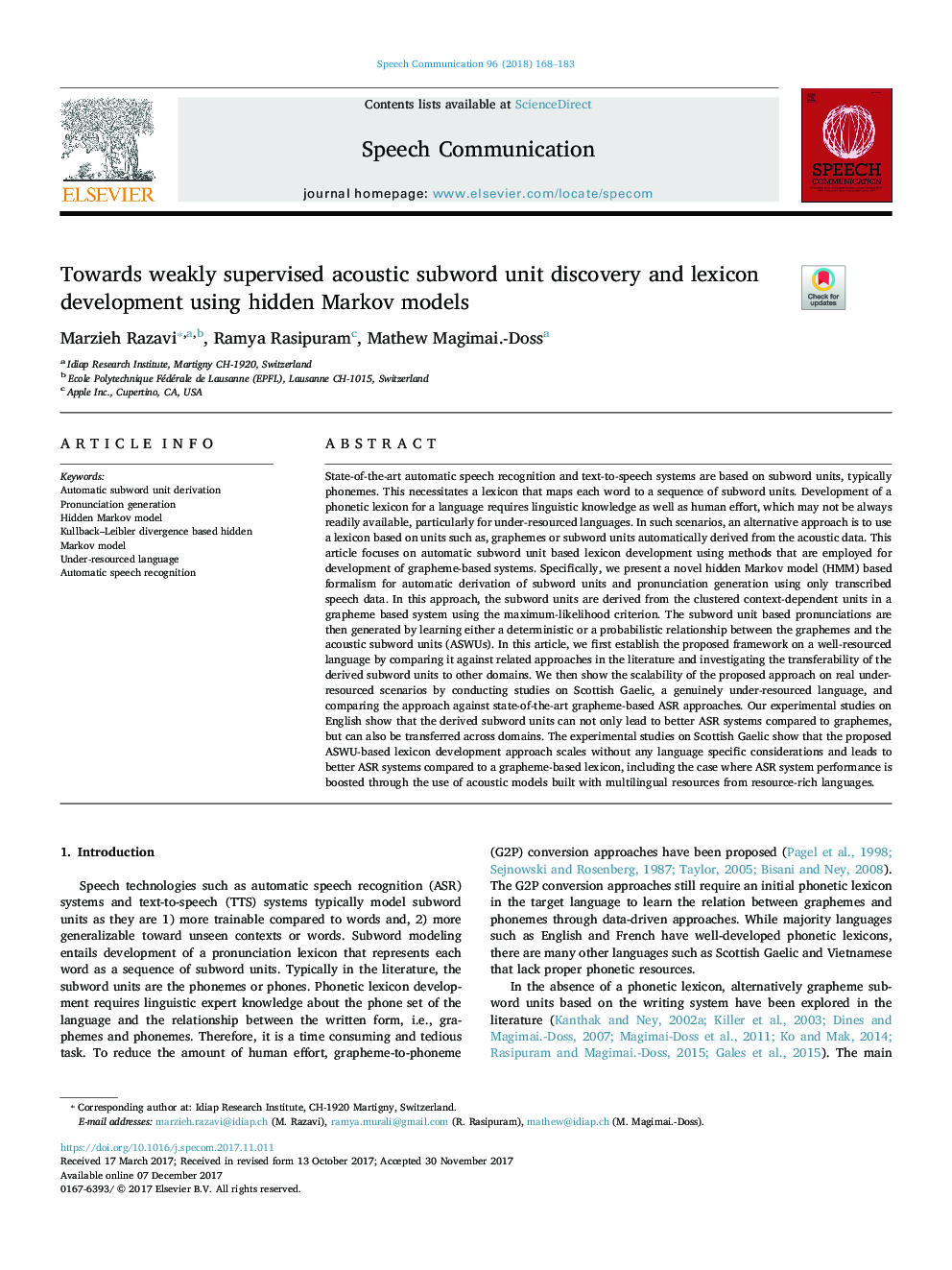| Article ID | Journal | Published Year | Pages | File Type |
|---|---|---|---|---|
| 6960832 | Speech Communication | 2018 | 16 Pages |
Abstract
State-of-the-art automatic speech recognition and text-to-speech systems are based on subword units, typically phonemes. This necessitates a lexicon that maps each word to a sequence of subword units. Development of a phonetic lexicon for a language requires linguistic knowledge as well as human effort, which may not be always readily available, particularly for under-resourced languages. In such scenarios, an alternative approach is to use a lexicon based on units such as, graphemes or subword units automatically derived from the acoustic data. This article focuses on automatic subword unit based lexicon development using methods that are employed for development of grapheme-based systems. Specifically, we present a novel hidden Markov model (HMM) based formalism for automatic derivation of subword units and pronunciation generation using only transcribed speech data. In this approach, the subword units are derived from the clustered context-dependent units in a grapheme based system using the maximum-likelihood criterion. The subword unit based pronunciations are then generated by learning either a deterministic or a probabilistic relationship between the graphemes and the acoustic subword units (ASWUs). In this article, we first establish the proposed framework on a well-resourced language by comparing it against related approaches in the literature and investigating the transferability of the derived subword units to other domains. We then show the scalability of the proposed approach on real under-resourced scenarios by conducting studies on Scottish Gaelic, a genuinely under-resourced language, and comparing the approach against state-of-the-art grapheme-based ASR approaches. Our experimental studies on English show that the derived subword units can not only lead to better ASR systems compared to graphemes, but can also be transferred across domains. The experimental studies on Scottish Gaelic show that the proposed ASWU-based lexicon development approach scales without any language specific considerations and leads to better ASR systems compared to a grapheme-based lexicon, including the case where ASR system performance is boosted through the use of acoustic models built with multilingual resources from resource-rich languages.
Related Topics
Physical Sciences and Engineering
Computer Science
Signal Processing
Authors
Marzieh Razavi, Ramya Rasipuram, Mathew Magimai.-Doss,
